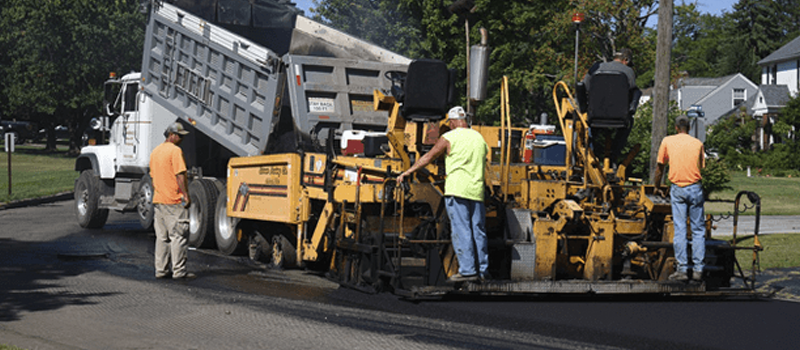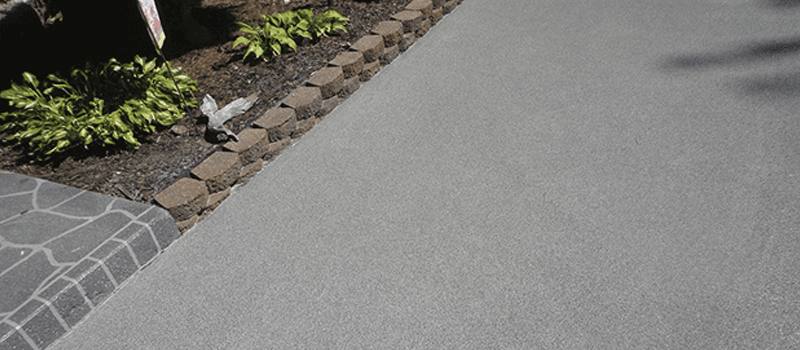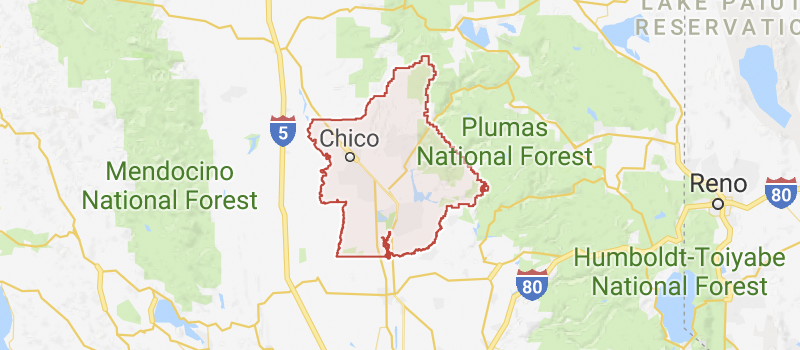Our Services

Asphalt Paving
This is the most common paving choice. The finished product is a smooth, solid surface. It’s more flexible than concrete, and less prone to cracking. It’s also less likely to be damaged from rock salt and ice melt in the winter. It hardens quickly and can be resurfaced.
We make the asphalt by mixing stone, sand, and hot asphalt in a slurry. We heat it to 300°F where it liquefies. Then we pour the hot, black liquid and press it with a steel wheel roller. We must pour it right away because it sets within an hour.
Note: This form of paving produces an end result with uneven edges.
Benefits of Asphalt Paving
- Melts Snow
- Clean, Hard Surface
- Costs Less than Concrete
- Good for Indoors and Outdoors
- Requires Sealing Every 2-3 Years
- Installed Over Gravel or Existing Pavement

Tar & Chip
This is a less expensive alternative to asphalt. Unlike gravel, it offers a solid surface. It has a rough texture, so it’s perfect for wet or snowy climates. Tar-and-chip is known by a few other names, including macadam, seal chip, chip-and-seal, or liquid-asphalt-and-stone.
We make it by pouring hot, liquid asphalt over crushed gravel. Then we coat the top with loose, finishing stones and press them down with a compression roller. You can choose from a variety of finishing stones to give your project a different look.
Note: Tar and chip works well with snow blowers and shovels. Snow plows, on the other hand, may damage the surface.
Benefits of Tar and Chip
- Lasts 7 to 10 Years
- Hard, Skid-Free Surface
- Doesn’t Require sealing
- Half the Price of Asphalt
- Doesn’t Need Regular Maintenance
- Good for Farms, Roads, and Driveways

Recycled Asphalt
This is another inexpensive alternative to asphalt and concrete. After the loose fill is compacted, the surface looks and feels similar to new asphalt. Also known as reclaimed asphalt pavement (RAP). Other names include cold-mix recycling, hot-in-place recycling, cold-in-place recycling, and finally, full-depth reclamation.
Recycled asphalt is a combination of removed pavement materials which contain asphalt and other aggregates. Workers typically remove this material from reconstruction jobs, resurfacing jobs, or buried utilities. The material is then pulverized and repurposed for paving driveways and roadways.
Note: After exposure to the elements, recycled asphalt tends to turn slightly different colors. A multitude of materials make up the recycled aggregate. As each material ages, it turns a different color. The result is a kaleidoscope of soft tans, greys, and browns.
Benefits of Recycled Asphalt
- Semi-Permanent
- Prevents Wash Outs
- Stabilizes Loose Soil
- Half the Price of Asphalt
- Installed Over Existing Gravel or Bare Ground
- Great For Long Lanes, Farms, and Filling Holes
DOES YOUR DRIVE WAY NEED A FACELIFT?
If you’re thinking of repaving your driveway, make sure you have all the information before you decide. Contact us today for your free estimate.
Get Estimate
Crushed Concrete
Like the asphalt in RAP, this concrete is recycled. It’s also a much cheaper alternative to asphalt, coming in at about half the price. It looks similar to crushed gravel, but it packs down more tightly. It’s permeable, and easy to install or remove.
The recycled material is an aggregate of concrete and other solid materials. Workers typically pull it up from resurfacing and reconstruction jobs. It’s then pulverized into gravel sized pieces which we use to pave driveways and roadways.
Note: The concrete is loose, so snow removal is difficult. If you use a plow or a snow blower, you’ll tear up the surface. If you live in snow country, we recommend recycled asphalt or tar-and-chip as an alternative.
Benefits of Crushed Concrete
- Packs Down Tight
- Semi-Loose Surface
- Environmentally Friendly
- No Maintenance Required
- Amazing for Heavy-Traffic Areas
- Excellent for Farms and Any Size Driveways

Hot Tar & Chip
This is also a less expensive alternative to asphalt. The end result is similar to “tar and chip,” but the surface is rougher. It’s also great for both wet and snowy climates.
We make it by pouring a slurry of hot, liquid asphalt and crushed stone on the ground. We then level the area using concrete rakes, and pack it using a steel wheel roller. You can choose from an assortment of finishing stones to match your property.
Note: It works well with snow blowers. Using a shovel can be a challenge because of the rough texture. Snow plows will definitely damage the surface.
Benefits of Hot Tar & Chip
- Reduces Dust
- Skid-Resistant Surface
- Half the Price of Hot Mix
- Choose Your Color of Stone
- Great for Long Lanes and Farms
- Does Not Require Regular Maintenance

Crack Filling
If you want to extend the life of your road or driveway but avoid costly resurfacing, this is your best option. Crack filling is often confused with crack sealing. The differences lie in the shape and size of crack to be filled/sealed. We do both, so you needn’t worry.
We heat an emulsion of asphalt and squirt it deep into the cracked surface. As it dries, the sticky material hardens, but remains semi-elastic. If the crack changes shape, the emulsion grows to fit the new environment.
Note: Cracks in your asphalt allow water access to the underlying structure. Water will widen these gaps and may buckle the surface. Cracks grow rapidly during winter’s freeze and thaw cycle. To protect your asphalt, seal or fill the cracks.
Benefits of Crack Filling
- Install Hot or Cool
- Minimize Crack Growth
- Extend Life of Pavement
- Seal Against Water Damage
- Camouflage Embarrassing Cracks
- Choose Latex, Rubber, or Elastomer

Sealcoating
This option is for those of you who’ve already paved your road or driveway. A sealcoating is a topcoat that prolongs the life and integrity of this paved surface. Water is the number one cause of damage to roadways. After a sealcoating application, water will roll off your surface as if it were a windshield.
It also seals against other chemicals and U.V. rays that degrade the crude oils in asphalt.
First we pour the sealcoating onto your pavement, then we smooth it out using asphalt squeegees. We must do this at least twice to cover the area properly. Afterward, we allow the surface to cure for twenty-four hours.
Note: If you haven’t properly sealed your drive, do so. It’ll add years to its life.
Benefits of Sealcoating
- Melts Snow
- Clean, Hard Surface
- Extends Service Life
- Reduces Maintenance Costs
- Installed Indoors or Outdoors
- Covers Gravel or Existing Pavement
AREAS WE SERVE
We proudly offer professional paving services to the following counties in Northern California: Shasta, Trinity, Humboldt, Tehama, Glenn, Butte, Lake, Del Norte, Mendocino, Siskiyou, Sacramento, Sutter, Placer, and Yuba Counties.
Learn MoreAreas we serve

Shasta County
Created in 1850, Shasta County was one of the founding counties of California. Politicians later split the huge county into three chunks. One split off to become Siskiyou County; the other, Tehama County. It was originally named after Mount Shasta which now resides in Siskiyou County.
Shasta County is well known for its annual celebration events. They include everything from Rodeo Week in May to the Air Show in June to the County Fair in September. Most events are held in or around Redding, the city with the largest population in the county. Shasta County is our leading customer. Parking lots, especially for fairgrounds, demand regular crack sealing and other paving services.
Clients we serve in Shasta County
- Anderson
- Redding
- Shasta Lake
- Cottonwood
- Burney
- Bella Vista
- Shingletown
- Shasta
- Palo Cedro

Trinity County
This heavily forested, mountainous terrain lies tucked away in northwestern California. Trinity County is one of the founding counties of California, incorporated back in 1850. Weaverville, the county seat, houses the second oldest courthouse in the state. The Weaverville Drug Store first opened its doors back in 1856, back before paving services even existed. The air hung heavy with dust from rut-filled, dirt streets. Horses lined the storefront, as their owners tromped inside to refill their prescriptions.
The area is dense with forest, making it a prime destination for campers, backpackers, and boaters. It also offers rafting, kayaking, hunting, and fishing. It’s the perfect summer destination for any adventurer.
Clients we serve in Trinity County
- Weaverville
- Hayfork
- Lewiston
- Douglas City
- Junction City
- Mad River

Humboldt County
Bordering the Pacific Ocean in northwest California, Humboldt County was originally home to a large Native American population. Tribes included Karuk, Wiyot, Yurok, Whikut, Hupa, Chilula, and Eel River Athapaskan peoples. When we perform paving services in the area, we always escape for a few hours to revel in the majesty of the towering redwoods. Nothing screams God’s Country like Humboldt County.
Nowadays, it’s better known for its lush nature. Humboldt is home of four major rivers, including the Klamath, Eel, Trinity, and Mad River. It’s also home of Redwood National State Park, Headwaters Forest Reserve, Six Rivers National Forest, and Trinity National Forest. It also boasts eight other state parks and a laundry list of Northern California beaches.
Clients we serve in Humboldt County
- Eureka
- Arcata
- McKinleyville
- Fortuna
- Myrtletown
- Rio Dell
- Pine Hills
- Cutten
- Hoopa Valley Reservation
- Bayview
- Willow Creek
- Ferndale
- Blue Lake
- Yurok Reservation

Tehama County
Back in 1856, Tehama County was formed from parts of Shasta, Butte, and Colusa Counties. Famous early figures include Jedediah Smith, William B. Ide, John C. Freemont, and Kit Carson.
One of the most popular sites in Tehama County is Lassen Volcanic National Park. We performed some paving services out there once. It is off the beaten path, located in the town of Mineral. It’s a beautiful wonderland for hikers during spring and summer. During the winter, Summit Peak is the perfect getaway for backcountry skiers. The park is a perfect destination for a day trip.
Clients we serve in Tehama County
- Red Bluff
- Corning
- Lake California
- Los Molinos
- Rancho Tehama Reserve
- Gerber

Glenn County
Originally formed from parts of Colusa County, Glenn County was formed in 1891. The local government named the county after Hugh J. Glenn, a man of great political and commercial prominence. He was largest wheat farmer of his day.
Glenn County is also home to the main railroad interchange between California Northern Railroad and Union Pacific Railroad. The railroad first reached the town of Willows back in 1879. They certainly could have used our paving services. The roads were nothing but dirt and gravel back then.
Clients we serve in Glenn County
- Orland
- Willows
- Hamilton City
- Artois

Butte County
Incorporated as one of California’s 19 founding counties, Butte County has been around since 1850. The most recent census shows the population at over 220,000. It also happens to be one of our favorite spots to conduct paving services.
We love to look across the landscape and imagine production crews filming our favorite movies. Hollywood has filmed several movies in the county, including Gone with the Wind, Friendly Persuasion, Under Wraps, The Adventures of Robin Hood, Ruby Ridge: An American Tragedy, The Klansman, Magic Town, and The Outlaw Josey Wales.
Clients we serve in Butte County
- Chico
- Paradise
- Oroville
- Magalia
- Oroville East
- Thermalito
- Gridley
- South Oroville
- Durham
- Palermo
- Kelly Ridge
- Biggs

Lake County
Back in 1861, Lake County was formed from parts of Napa and Mendocino counties. By the early 20th century, the area had earned a reputation for some of the world’s greatest wines. Unfortunately, Prohibition not only ended the county’s reputation but also its wine vineyards. Farmers replaced them with pear and walnut trees.
Today, the county once again houses some of the country’s best vineyards. They’re one of our foremost clients for paving services. Over thirty-five wineries call it home. The air quality is the best in the nation, and the population is only around 65,000. It’s a marvelous place to visit and a perfect place to retire.
Clients we serve in Lake County
- Clearlake
- Hidden Valley Lake
- Lakeport
- Kelseyville
- North Lakeport
- Clearlake Riviera
- Lucerne
- Nice
- Clearlake Oaks
- Cobb
- Middletown
- Lower Lake
- Upper Lake
- Soda Bay
- Spring Valley

Del Norte County
Located in northwest California, Del Norte County runs along the Pacific Ocean, just shy of Oregon. Originally, Del Norte County was the seat of the Yurok and Tolowa Native American Nations. Jedediah Smith explored the area in the mid-1800s, and Congress introduced it as part of Klamath County in 1857.
Del Norte County is best known for its redwood trees and coast line. Scenic Highway 101 takes travelers on a tour past sandy beaches and rocky protrusions jetting from the sea. Old growth redwoods and the wild Smith River create the ultimate outdoor recreation for couples and small families. We love to take breaks from our paving services and sneak down to the river to dunk our feet in the cool water.
Clients we serve in Del Norte County
- Crescent City
- Bertsch-Oceanview
- Yurok Reservation
- Smith River
- Klamath
- Gasquet
- Hiouchi

Mendocino County
Located north of San Francisco and west of Central Valley, Mendocino County was established in 1850. It derives its name from Cape Mendocino, the westernmost point of the coast of California.
It’s arguably best known for the Lost Coast, a natural, development-free area of California Coastline. Other sites to see include a list of microbreweries (North Coast, Anderson Valley, Ukiah, Mendocino, O’Meara Bros, Overtime, and Kelsey Creek Brewing Company). After a long, hot day supervising our paving services, there’s nothing like sipping on a cool microbrew.
Clients we serve in Mendocino County
- Ukiah
- Fort Bragg
- Willits
- Brooktrails
- Redwood Valley
- Covelo
- Laytonville
- Talmage
- Boonville

Siskiyou County
Bordering Oregon, Siskiyou County was created from parts of Shasta and Klamath Counties in 1852. Siskiyou Trail, the footpath Forty-Niners used during the California Gold Rush, winds through the heart of Siskiyou County. Those gold miners could have used a healthy dose of our paving services. Perhaps fewer would have died during the long trek from the East Coast.
Today, Siskiyou County is best known for its evergreen mountain ranges. Siskiyou County hosts the Sierra Nevada Mountain Range and Mount Shasta. Each year, Mt. Shasta holds a 4th of July foot race, attracting over 5,000 registered runners. The race offers a two-mile youth run, a two-mile fun walk, and a five-mile race. The night ends with a fireworks display over Lake Siskiyou.
Clients we serve in Siskiyou County
- Yreka
- Mount Shasta
- Weed
- Dunsmuir
- Montague
- Happy Camp
- McCloud
- Tulelake
- Dorris
- Fort Jones
- Etna
AREAS WE SERVE
We proudly offer professional paving services to the following counties in Northern California: Shasta, Trinity, Humboldt, Tehama, Glenn, Butte, Lake, Del Norte, Mendocino, and Siskyiou Counties.
Learn More